Vortex Generator Effect, Shell and Tube Heat Exchanger, ANSYS Fluent
$80.00 Student Discount
In this project, the heat transfer fluid flow inside the shell and tube heat exchanger with fins on the flat shell as vortex generators was simulated by ANSYS Fluent software.
Click on Add To Cart and obtain the Geometry file, Mesh file, and a Comprehensive ANSYS Fluent Training Video.To Order Your Project or benefit from a CFD consultation, contact our experts via email ([email protected]), online support tab, or WhatsApp at +44 7443 197273.
There are some Free Products to check our service quality.
If you want the training video in another language instead of English, ask it via [email protected] after you buy the product.
Description
Introduction & Project Description (Vortex Generator Effect on Shell and Tube Heat Exchanger)
The heat transfer from one fluid to another is done by a device called a compact heat exchanger. These types of heat exchangers cause heat transfer and have less volume and weight than other cases. However, they have some problems. For example, the fluid pressure drop in it, is more significant than the conventional exchanger. These types of heat exchangers are used in applications that require high heat transfer rates in limited volumes using vortex generator.
The compact heat exchangers are made in the different shell and tube heat exchangers, air-cooled heat exchangers, screw heat exchangers, spiral heat exchangers, plate heat exchanger type, and vertical and horizontal designs. This device is widely used in various applications.
Introduction & Project Description
various strategies to improve the heat transfer rate are used, the most important of which are:
- Adding fins in different shapes to increase the level of heat transfer
- Use facilities to increase turbulent flow in the fluid, such as adding baffle plates at a calculated distance
- The use of new materials such as sponge metals, polymers, and ....
Introduction & Project Description
The finned heat exchanger and other flow parameters such as fluid velocity, how the fluid enters and exits and moves, etc., are the factors affecting the turbulent flow. A useful strategy has emerged to increase heat transfer performance on the air-side using flow control, known as a vortex generator, in recent years. The vortex generator is a small protrusion on the surface that disrupts the flow regime and disrupts its boundary layer. When the fluid flow passes through the vortex generator, due to the separation of the flow at the edge of the vortex generator, vortices are produced in the direction of flow in the flow field, which causes mixing in the central part of the flow and changes in the boundary layer and its instability. Vortices are divided into transverse vortices and longitudinal vortices according to the direction of the vortex eruption.
Heat transfer increases due to these vortices. Vortex generators is a passive method to improve heat transfer. This method is commonly used to design compact heat exchangers. The most important factors influencing the vortex generator fin’s heat transfer performance are the vortex generator angle of attack, the generator’s length, and height. The heat transfer performance from surfaces with a vortex generator is susceptible to these two factors, especially its attack angle.
Introduction & Project Description
The contribution of the vortex generator to heat transfer from the surface is very small, and this improvement in heat transfer can be attributed mainly to the vortices created in the direction of flow and the correction of the separation area behind the pipes due to the vortex generator position relative to the pipes. Vortices increase the mixing and modification of the boundary layer, decreasing the air’s thermal resistance and increasing heat transfer. In passive methods, the increase in heat transfer is accompanied by an increase in pressure drop. The gradual pressure drop is mainly due to the formation of the perception caused by the vortex generator. In general, the production of vortices is the reason for the additional drag that occurs in the pressure drop.
In this project, we simulate the heat transfer fluid flow inside the shell and tube heat exchanger with fins on the flat shell as vortex generators by ANSYS Fluent software.
Shell and Tube Heat Exchanger Geometry and mesh
We model this project’s geometry in ANSYS Design Modeler software, and carry out its mesh by ANSYS Mashing software.
The following Figures show the geometry and mesh. As we can see in the Figure, the grid has two ways of structured in the side parts and unstructured in the middle part of the geometry. Also, The total number of mesh cells is 426100.
Vortex Generator Effect on Shell and Tube Heat Exchanger Numerical Setup for CFD Simulation:
In this simulation, we consider the following assumptions:
- Due to incompressibility, we implement the pressure-base solver.
- We perform this simulation as a steady-state.
- Due to the small effect of gravity, we neglect the gravity acceleration effect.
Due to the geometry’s symmetry and to reduce the computational cost, we model only a half of the geometry, and we also use the symmetry boundary condition.
We present a complete information on boundary conditions in Table 1 and following Figure.
Table 1. Table of Boundary conditions
| Inlet | 1.42 m/s & Normal to Boundary
Turbulence intensity: 8.023% Hydraulic diameter(m): 0.00257 Temperature(k) : 303 |
| Outlet | Pressure outlet |
| Symmetry | Symmetry |
| VG | Stationary wall |
| Tube | Stationary wall
Temperature (k): 338 |
We apply a Simple algorithmic the pressure-velocity coupling, and we choose SST model as a turbulence model. Also, we present the other settings such as the discretization method and initial conditions in the table below.
Table 2. Table of other numerical setups
| discretization |
|
||
| Initialization method | Hybrid |
Results & Discussions
Although the tutorial video fully explains how to extract the results, In this section, as in the last section, we present contours of pressure, temperature, velocity, and vectors.
Examining the pressure contour shows that a pressure drop occurs in the flow path passing through the pipe. This pressure drop is due to surface friction. A sudden drop in pressure along the walls causes the flow to separate. We can see this separation in the form of a wake behind the pipes. The velocity vectors illustrate this well. From the temperature contour, it is clear that the airflow in the areas behind the pipe has a higher temperature than in other areas. It means that the Wake areas have low heat transfer. Since this research project aims to increase the heat transfer rate and reduce the heat exchanger volume, we can reduce the Wake areas.
The use of vortex generators is to create an obstacle in the flow path. Although this barrier, in turn, increases the pressure drop along the flow path, it allows us to redirect flows to areas in mind. The pressure drop is undesirable, but as seen in the velocity contour, the size of the wake areas behind the tube is significantly reduced. Instead, smaller wake areas are created behind the vortex generator. Reducing the wake area behind the pipe is of great value from the point of view of heat transfer. The vortex generator directs the flow to the space between the pipes, and on the other hand, the vortex generator reduces the flow passage in the channel.
Results & Discussions
Therefore, the vortex generator send the flow to the Wake areas at high acceleration. In addition to strongly affecting the Wake area, accelerated fluid flow brings a significant volume of cool fluid from the upstream areas to the Wake areas, resulting in better heat transfer and better mixing in this area, between the fluid in the upstream areas and the Wake areas. Besides, by injecting fluid in this area, we delay the separation of the pipe surfaces’ flow and it reduces the thermal boundary layer’s thickness.
Therefore, the vortex generator, as a passive technique to increase the heat transfer by narrowing the flow passage and reducing the wake area, and correcting the boundary layer near the walls, sends high-momentum fluid to this area. Slowly vortex generator, by reducing the passage of fluid flow behind each pipe also causes the flow through this section to hit the pipe’s outer surface with higher speed and shirt, which can be one of the influential factors in increasing heat transfer. We know that the higher the intensity of the fluid hitting the pipes, the higher the heat transfer rate from that surface.
You can obtain Geometry & Mesh file and a comprehensive Training Movie that presents how to solve the problem and extract all desired results.
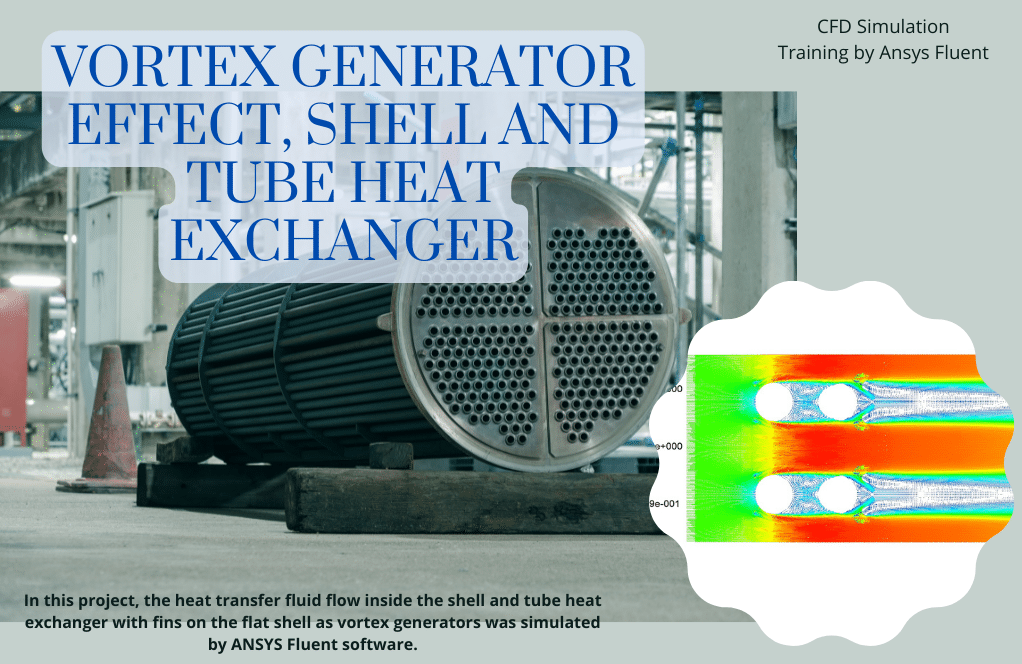
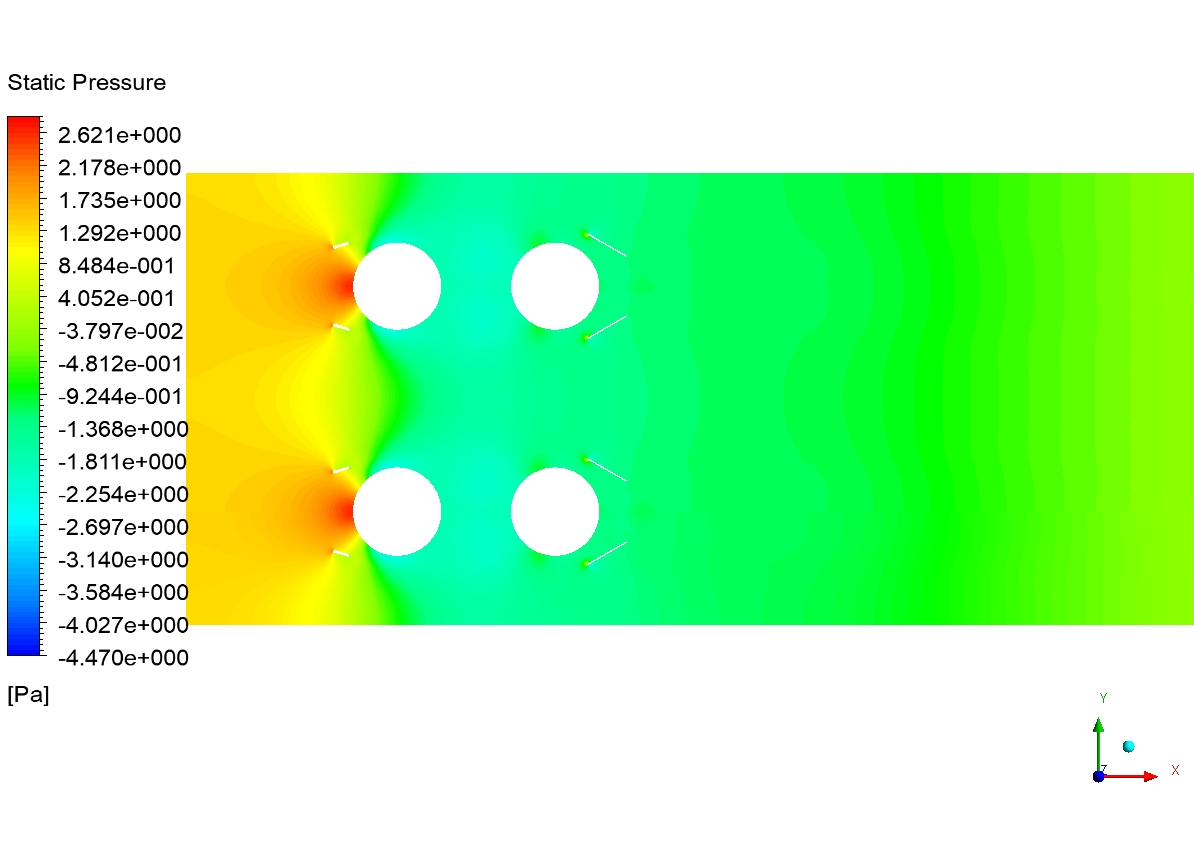
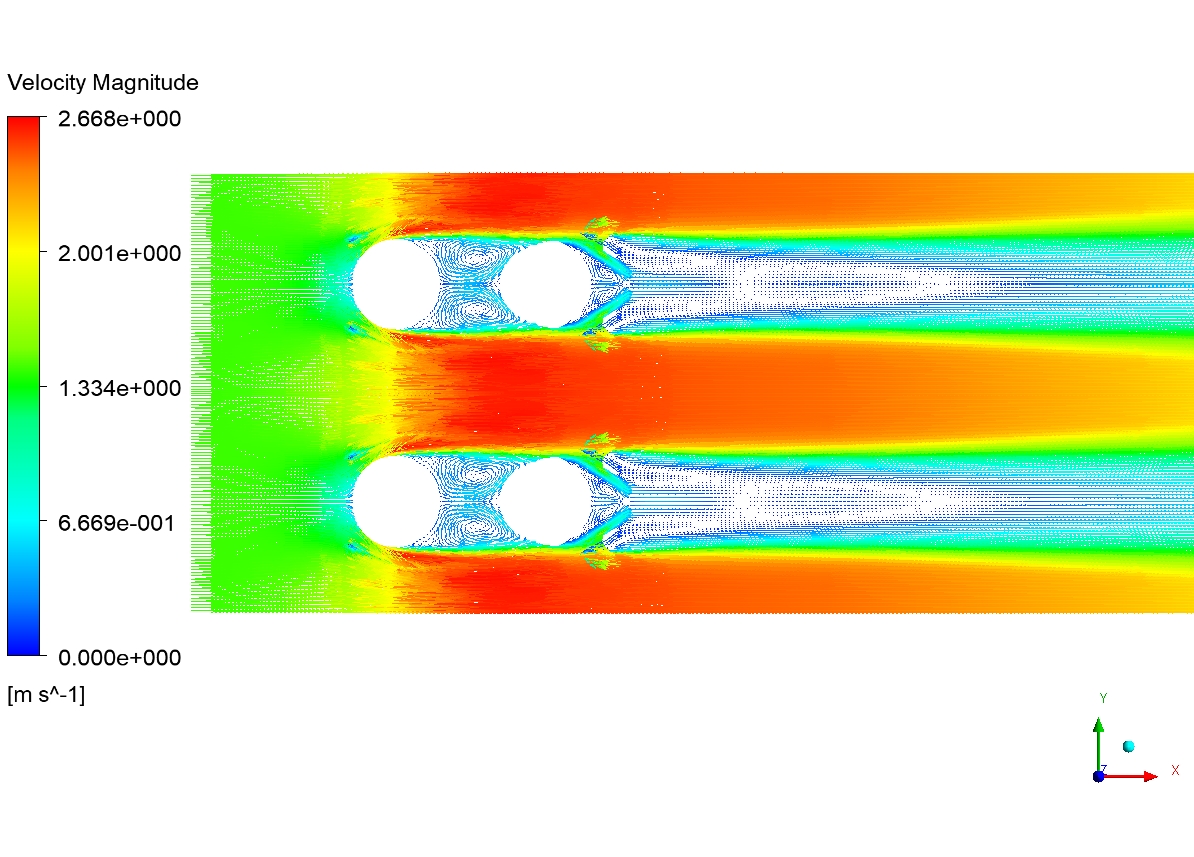
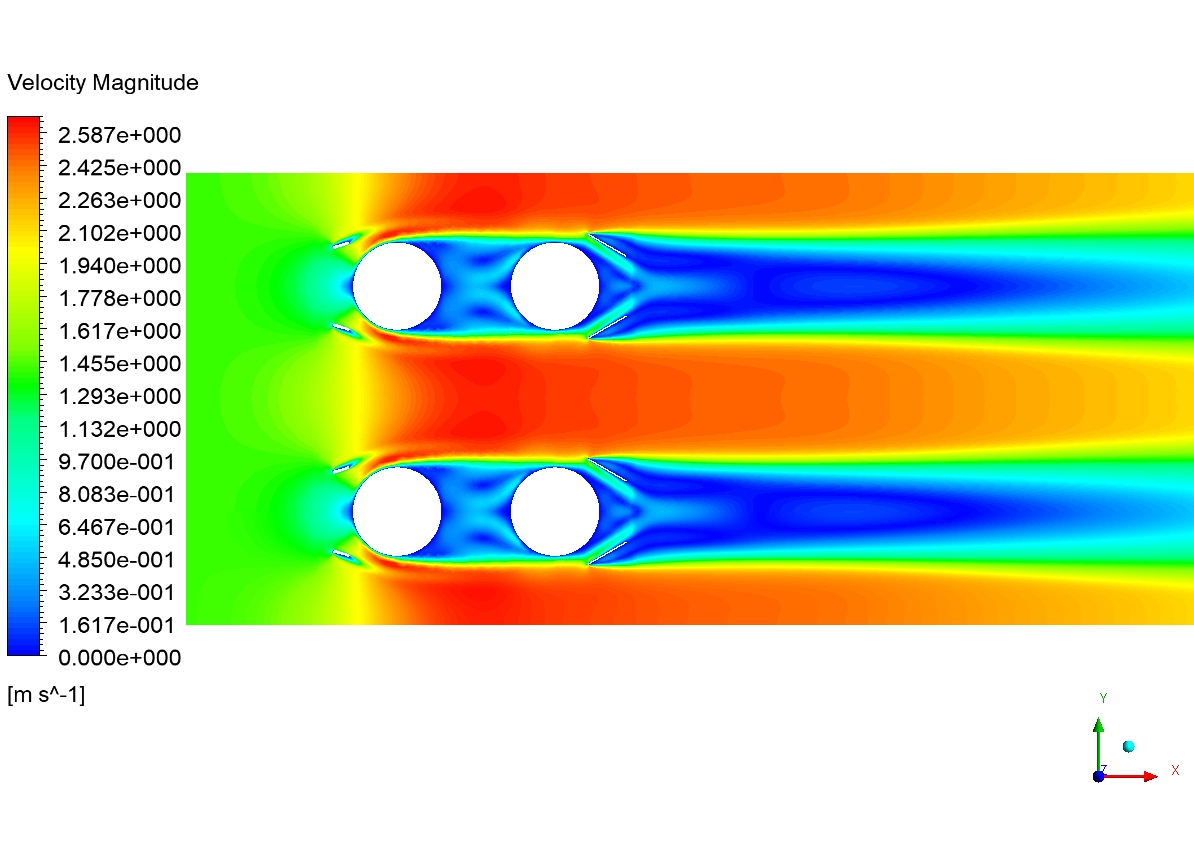
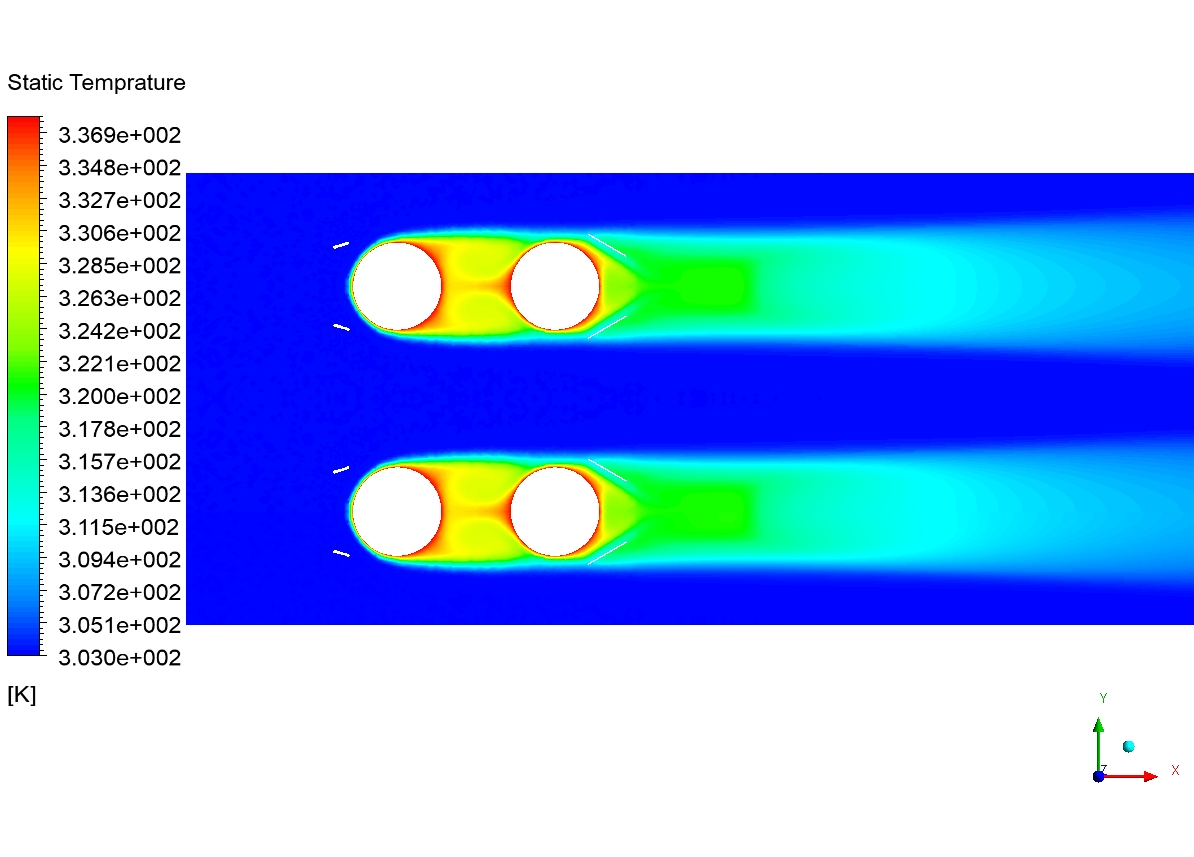



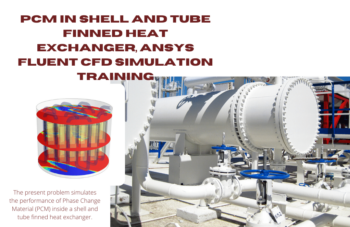
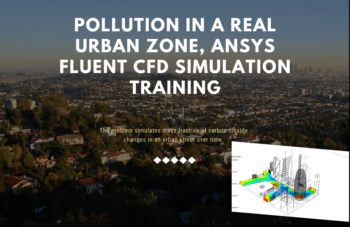
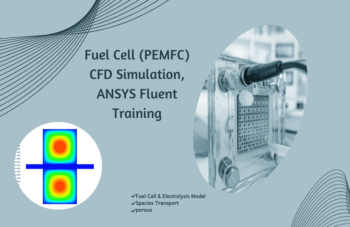

Dr. Gabriel Ratke Sr. –
Can the simulation predict the pressure drop in the heat exchanger?
MR CFD Support –
Yes, the simulation can predict the pressure drop in the heat exchanger. This is important for understanding the flow dynamics and the pumping power requirement.
Prof. Eleanora Lemke –
How does the simulation handle the energy balance in the heat exchanger?
MR CFD Support –
The simulation solves the energy equation for both the fluid and the solid domains, ensuring energy conservation in the system. It takes into account conduction in the solid parts and convection in the fluid parts.
Lelah Rath –
I’m intrigued by how the vortex generator reduces the size of the wake areas behind the tubes. Can you explain how this specific design affects the flow and wake patterns in a heat exchanger?
MR CFD Support –
In the simulation, the vortex generators create perturbations in the flow, preventing boundary layer growth and delaying flow separation behind the tubes. The induced vortices from the generators enhance the mixing of the flow, resulting in a thinner thermal boundary layer. Therefore, wake regions behind the tubes shrink, boosting heat transfer performance. Vortex generators efficiently redistribute the flow to reduce low velocity zones (wakes) and bring higher momentum fluid to the tube surfaces, thus enhancing the overall heat transfer rate.
Asia Kirlin –
Truly impressed with how the use of vortex generators in shell and tube heat exchangers is intelligently applied to increase heat transfer rates! Great application of fluid dynamics and heat transfer principles.
MR CFD Support –
Thank you for your kind words. We are glad to know that the application of fluid dynamics and the implementation of vortex generators in heat exchanger design within our ANSYS Fluent tutorials have been insightful for you. Your appreciation motivates us to continue delivering detailed simulations and educational content for CFD enthusiasts like yourself!
Julianne Koch –
Are there different geometrical arrangements for the vortex generators used in the simulation, and how do they affect heat transfer and pressure drop?
MR CFD Support –
In the simulation provided by MR CFD, vortex generators are designed and arranged to enhance the mixing of fluid and improve heat transfer in a shell and tube heat exchanger. The specific geometry, positioning, and arrangements of vortex generators have significant effects on both heat transfer enhancement and pressure drop. These parameters have been optimized during the simulation to achieve a beneficial balance between increased thermal performance and an acceptable level of pressure drop due to additional flow disturbance caused by the vortex generators.
Ms. Felipa Casper PhD –
The application of vortex generators in this CFD analysis for a shell and tube heat exchanger seems to be a novel approach to enhancing heat transfer. However, I’m curious, how does the pressure drop induced by the vortex generators compare to the increase in heat transfer efficiency? Is the trade-off always advantageous, or are there specific scenarios where it might not be beneficial?
MR CFD Support –
The pressure drop induced by vortex generators is a result of increased flow disturbance, which in turn improves heat transfer efficiency. While there is typically a trade-off, the use of vortex generators is generally advantageous when high heat transfer rates are necessary in compact spaces. However, whether the trade-off is beneficial depends on the specific application and operating conditions. For instance, in cases where the reduction in pressure drop is a critical design constraint or energy consumption considerations are paramount, the implementation of vortex generators might need further optimization to ensure the benefits outweigh the additional pressure losses.
Prof. Hilma McClure II –
Can the simulation handle multiphase flows?
MR CFD Support –
Yes, the simulation can handle multiphase flows. This can be important for applications where different phases are present in the heat exchanger.
Prof. Garrett Rath II –
The geometry seems quite complicated. How did you handle the meshing for the intricate parts like vortex generators to ensure accuracy in the simulation results?
MR CFD Support –
For complex geometries like the one involving vortex generators, mesh refinement is typically applied to the intricate regions to capture the flow accurately. We used a combination of structured mesh for the simpler parts of the geometry and unstructured mesh for the complex regions around the vortex generators. The mesh quality around the vortex generators was enhanced to accurately resolve the velocity gradients and thermal effects, ensuring reliable simulation results.
Adonis Huel –
I’m interested in knowing more about how the vortex generator specifically alters the flow to enhance heat transfer. Can you provide examples of how the presence of a vortex generator affects flow separation and boundary layer behavior?
MR CFD Support –
In essence, the vortex generator creates localized, low-pressure zones that make the fluid mix more efficiently. This mixing increases the boundary layer’s energy, which thwarts the flow separation you’d usually see behind objects like tubes. The disturbance also thickens the boundary layer momentarily but makes it thinner downstream, improving overall heat transfer because the thinner boundary layer offers less thermal resistance.
Dr. Sunny Dickens –
The use of vortex generators in enhancing the heat transfer performance of a shell and tube heat exchanger is impressive. It seems particularly effective in tackling the wake areas behind the tube, ensuring efficient heat transfer.
MR CFD Support –
Thank you for your positive feedback on the vortex generator effect in heat exchangers! We’re happy to hear that you found the information about how it improves heat transfer and reduces wake areas so enlightening.
Miss Linda Farrell –
Can the simulation model the turbulence generated by the vortex generators?
MR CFD Support –
Yes, the simulation uses turbulence models to accurately capture the turbulence generated by the vortex generators. This is important for predicting the heat transfer enhancement.